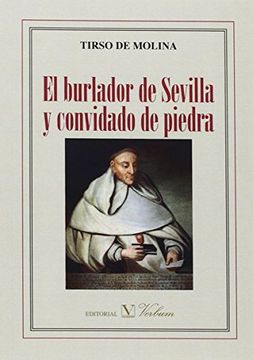The Trickster of Seville and the Stone Guest (Spanish: El burlador de Sevilla y convidado de piedra) is a play written by Tirso de Molina.Its title varies according to the English translation, and it has also been published under the titles The Seducer of Seville and the Stone Guest and The Playboy of Seville and the Stone Guest.The play was first published in Spain around 1630. Title of El Burlador de Sevilla y combidado de piedra The Practical Joker from Seville and His Stone Dinner Guest. A second version of the acting text – clearly the same play, identical to the Burlador in its plot, characters, and theme, but differing (sometimes sharply) in its diction, tempo, and tone (see Mandel 39-40).

Burlador de Sevilla
Jornada Tres
El Burlador De Sevilla English Translation Act 1

El Burlador De Sevilla English Translation Act 3
Batricio becomes upset by Don Juan’s attitude at the dinner where he monopolized Aminta and expresses his frustration and anger. When Don Juan enters to talk to him, Don Juan easily convinces Batricio that Aminta and Don Juan are already lovers. He leaves and Don Juan remarks that he tricked him by appealing to Batricio’s honor. He goes to speak to Aminta’s father, Gaseno. Aminta tells Belisa of her worries about Batricio who has been jealous and melancholy all day. She wonders about Don Juan's identity and what he wants. In the next scene, Don Juan enters with Catalinón and Gaseno, who has promised his daughter to Don Juan. After he leaves, Catalinón warns Don Juan that Isabela waits to marry him. Don Juan says they will leave after he seduces Aminta. Catalinón tells him that God will take his vengeance on him someday but
Don Juan refuses to listen and says he is young and does not need to worry about behaving yet. Catalinón leaves and Aminta, dressed for bed, comes in. Surprised to see Don Juan instead of Batricio, she tells him to leave but the trickster convinces her that Batricio has forgotten her. Don Juan seduces her. Isabela and her servant Fabio are travel toward Seville for her wedding. They encounter Tisbea, who tells them of her encounter with Don Juan. Isabela invites her to travel with them. Meanwhile in Seville, Don Juan and Catalinón talk in a cemetery where they find the tomb of Don Gonzalo de Ulloa. The inscription on the tomb speaks of vengeance. Don Juan jokingly invites the statue to dine with him that night. They return to his house for dinner and the stone statue of Don Gonzalo comes to dinner as invited. Don Juan feels frightened at first but bluffs his way through dinner.
A very nervous Catalinón makes jokes all through the meal. The statue invites them to dine with him the next day at his tomb. In the castle, Don Diego and the king of Castilla try to arrange marriages for Don Juan with Doña Isabela, Mota with Doña Ana, and Octavio with a woman of his court. Duke Octavio arrives and asks for permission to fight with Don Juan but the king refuses. The king and Don Diego leave and Gaseno and Aminta arrive. They tell Octavio that Don Juan promised to marry Aminta but seduced her and left. Octavio leaves with them, hoping to use Aminta to ruin Don Juan´s wedding. Don Juan and Catalinón return to the churchyard. They eat with the stone statue who serves them serpents and scorpions.
Afterward the statue takes Don Juan by the hand and drags him down to Hell. At the palace, the king and Don Diego encounter Batricio and Gaseno, Tisbea and Isabela, Aminta and Octavio, and Mota. They all complain of Don Juan. Catalinón comes in and recounts the death of Don Juan. The king declares this justice from heaven and marries off Octavio with Isabela, Mota with Doña Ana, and Batricio with Aminta. Only Tisbea remains unmarried.